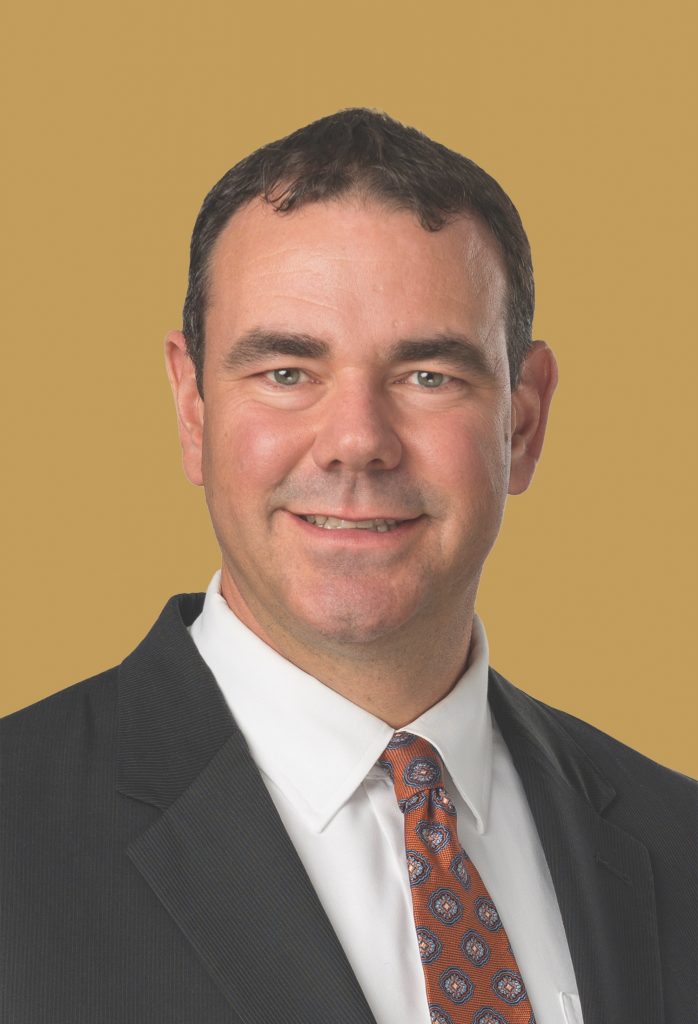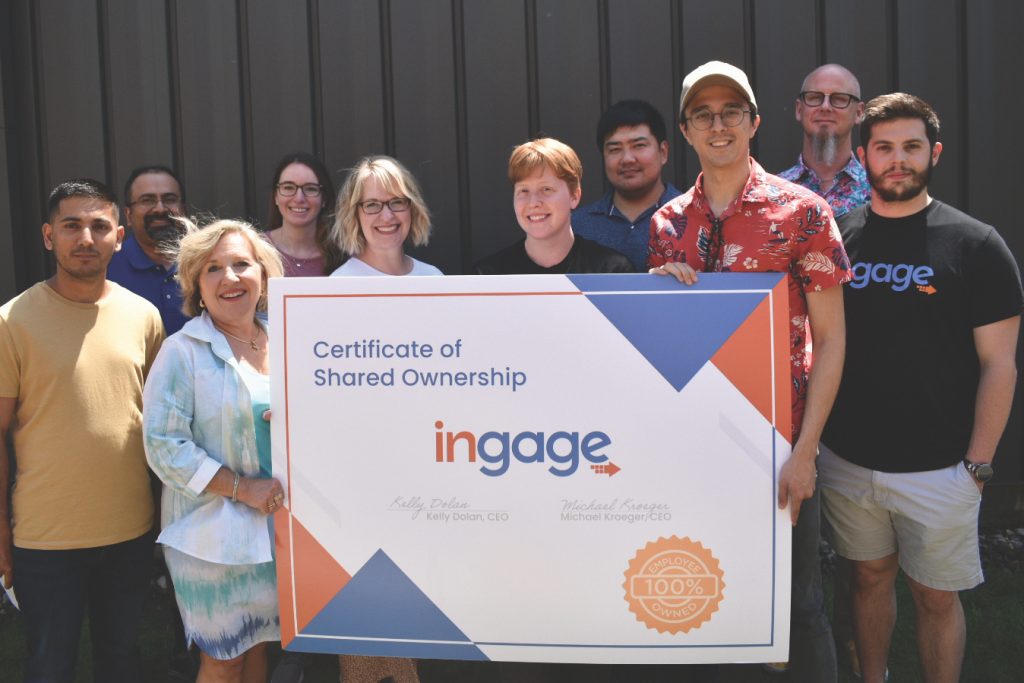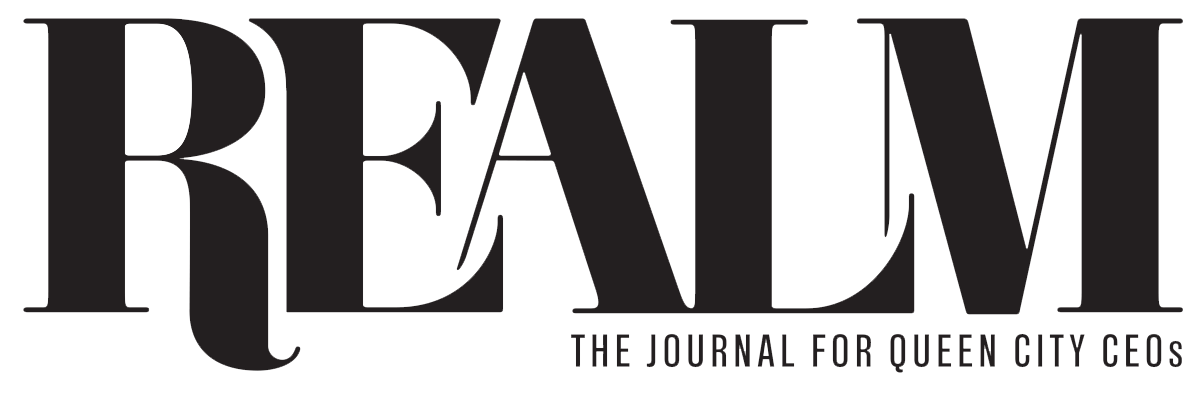It was the end of a wonderful three days and two nights in Nashville. Ingage Partners’ employees were in a celebratory mood, chatting excitedly about the successes 2017 had brought and the new clients who’d come their way. They bonded over bourbon and blues and shared family photos and company gossip. Now, digesting both a view of the Nashville skyline through the restaurant windows and the Southern buffet dinner, 55 employees and their spouses sat back as company co-founders Michael Kroeger and Kelly Dolan took the podium.
Kroeger and Dolan were excited to share the results of their under-the-radar work. The news, they believed, wouldn’t just transform their company—it would be a boon to their employees’ futures. Kroeger studied the faces of his employees, anticipating their excitement. “Kelly and I have decided to sell the company, and we’re selling it to you,” he said, or something to that effect. He doesn’t remember the precise verbiage he used. But he vividly remembers the reaction. “The room went silent. Totally quiet. It was like, Uh, what? Is that a good thing?”
The stunned quiet, followed by a torrent of questions and a dose of misunderstanding, isn’t surprising, says David Whaley, a partner at Thompson Hine and a leading expert on employee stock option plans (ESOP). Almost by necessity, he says, business owners need to work surreptitiously with the many parties to the transaction—bankers, lawyers, trustees, third-party administrators, and themselves—before letting employees in on the secret. Owners need the flexibility to work at their own speed in setting up an ESOP or, if the shoe doesn’t fit, the ability to quietly pull the plug.
ESOPs are qualified benefit plans that give employees ownership interest in their company through the issuance of stock. A trust fund holds and distributes these shares, which vest after a certain number of years, while a third-party trustee determines the share price and thus the value of each employee’s holding. Like any stock, the price can go up or down depending on how the company is performing. In essence, ESOPs more closely tie the employee’s financial well-being to the company’s bottom line.
According to the National Center for Employee Ownership, there are nearly 6,500 ESOPs in the U.S. today, covering more than 14 million employees. The largest is Florida-based Publix Supermarkets (with 230,000 employee-owners), while the Davey Tree Expert Company in Kent is Ohio’s largest with 11,350 employee-owners. Among the Cincinnati region’s employee-owned companies are Model Group, Messer Construction, School Outfitters, Rhinegeist, Ingage Partners, The Motz Group, Epipheo, and commercial real estate developer Al. Neyer.
“I believe our ESOP program creates a culture where there is a great deal of accountability, empowerment, and autonomy with each employee,” says Molly North, CEO of Al. Neyer. “Those kind of attributes can exist in every culture, but family-owned businesses often struggle achieving that. You can make a good business case for a decision, but if the owner doesn’t want to do what makes sense, well, it doesn’t happen. As employee-owners, we take ownership because we actually own the business.”
North, who has been with the company since 2007 and led it since 2015, refers to Al. Neyer as a “collective business” and believes employee ownership has changed the mentality of its 190-person workforce. Employee-owners, she says, view clients as not just the company’s but theirs, too. Their work, she says, reflects that personal touch, which customers notice. “When we drive this philosophy,” she says, “we win every time.”
Al. Neyer’s ESOP program began in 2014 when North was the company’s chief financial officer. Like Kroeger, she recalls that employees at first didn’t know what being an employee-owner meant, and so the transition was challenging. After all, the company had been in business since 1894 and was being led by the Neyer family’s fifth generation. Al. Neyer without Neyers as owners seemed unthinkable. “When you’ve worked for years for a family-owned company, you knew who you worked for,” says North, “so it required a culture change and, in effect, a rebuilding of the company.” She sighs. “I know that now in hindsight.”

Companies decide to adopt an employee-ownership structure for a variety of reasons, says Whaley, but the rationale behind Al. Neyer’s decision is typical. A family business hits a generational wall. Baby Boomer owners are reaching retirement age, and the pandemic has accelerated their itch to move on. But their children have other interests or perhaps already other careers and aren’t keen on keeping the business in the family. “You want out, but what’s your exit strategy?” Whaley says. “You could sell to a competitor or maybe to a private equity group or maybe even to your executive team. That last choice might be preferable because you know them, but they probably don’t have enough cash.”
Family-business owners typically have a strong sense of community, which can be both geographic and personal. For the current owner, for instance, it’s always been his grand- father’s company. For employees of family-owned businesses, they’ve often worked there for years alongside the founding family’s children. The owner-employee relationship isn’t necessarily paternalistic, but it often carries emotional ties. Selling the business to employees through an ESOP can protect their jobs, allow them to build equity toward their retirement, and give the seller peace of mind. “It’s important to the seller, usually, that the family name is still on the building when the sale is completed,” says Whaley. “It’s not just vanity. It’s that sense of community they want to still project. I had one guy tell me that if he sold to a competitor he’d have to move out of town.”
That sense of community—maybe it’s really the family legacy—is so strong that Whaley says he’s participated in transactions where the seller agreed to take less than the market price for a sale to his employees.

Epipheo was in trouble. The fledgling creative video services company was cutting edge when it began producing “explainer videos” back in 2009. Clients flocked to them to cut short videos designed specifically for the internet—many of them animated—that would describe complex issues to employees or customers. “The company culture was very loose,” recalls Daniel Armstrong, Epipheo’s head of design. “We said, Hey, let’s just be good to each other. We didn’t need HR policies. Idealism was through the roof. We were making cool stuff, and you can be an idealist when everything is going great.”
But 10 years later the video production field was crowded with competitors, and Epipheo was struggling. The company owners, who were investors but not active participants, realized their old strategy wasn’t working in the volatile new market- place. They lured former Chief Operating Officer Lucas Cole back, and he teamed with Armstrong to restructure the company and prepare it to be sold. They had 18 months. “That changed everything for me,” Armstrong recalls. “Once you have a goal like that, the metrics become more focused. There is no hiding behind the inefficiencies we had in our business.”
Epipheo, Armstrong says, had lost its scrappiness and, he had to admit to himself, its joy. While Cole focused on the business, he worked to re-energize the creative side. They made a lot of changes in both operating procedures and personnel, and to their surprise overall expenses went down while work quantity and quality both improved. And, says Armstrong, Epipheo was once again a fun place to work.
He remembers when Cole found a buyer. The contract was set, and the money was right. As minority owners, both Cole and Armstrong would net a tidy sum. And yet they felt empty. They’d put 18 months of their lives into righting the company, whose valuation had tripled. “Lucas said to me, We’ve spent all this time making this business a place that I love again, and I don’t want to give it up,” says Armstrong. “And I just looked at him and said, Me, too.”
So they scrambled and took out loans, putting their personal assets on the line because, as Armstrong says, “we believed in what this team had done, was doing, and could do.” The owners were stunned and at first somewhat skeptical, but they agreed to sell Epipheo to Cole and Armstrong in September 2020.
Business continued to increase, and a little over a year later the two owners sold the company to its 46 employees, who of course included them. “It was in the plan all along,” Armstrong says, noting it’s another example of the commitment they have to their employees. That idealism hasn’t gone away; it’s just been monetized.
The ESOP strategy started with the two owners agreeing on the profit they needed to cover the risk they’d personally taken and to create a healthy, sustainable company balance sheet. “We came to that number and agreed that, as soon as we reached it, we’d pull the trigger,” Armstrong recalls. They hit their goal in just six months, but it took another six months to work through what’s a cumbersome ESOP creation process. In November 2021, Epipheo became a 100 percent employee-owned company. ESOPs, Armstrong says, are particularly well-suited for the creative content industry. Work matters the most when you know you’re going to receive a direct benefit from it, and that’s particularly inspiring to the creative class. He relates a story from just a few weeks after the ESOP was established when Epipheo landed a large new client. Before the ESOP, he says, employees might look at this new workload as demanding and stress-creating but with little, if any, personal reward. Now, he says, employee-owners view new clients as their bread and butter.
Epipheo’s ESOP journey, Whaley says, is another good example of a company discovering that its unique culture or line of work is compatible with employee ownership. ESOPs don’t fit neatly into all cultures, and some owners have walked away when they’ve figured that out. They aren’t rescue plans, he adds, noting that logic tells you employees won’t be excited and motivated at owning a company that’s failing.

As in Epipheo’s case, Ingage Partners’ genetic code sports an altruism strand of DNA. The East End IT business was founded in 2011 as a “purpose-based company” that, just four months into its existence, began to contribute a portion of profits to local charities. Ingage is a Certified B Corporation, meaning it’s recognized by a respected third-party nonprofit as a company demonstrating high social and environment performance. “We measure success on the triple bottom line: people, planet, and profit,” says Kroeger.
So it wasn’t a great leap, he says, to begin the ESOP process in 2017. Like Epipheo, Ingage was in good financial health, and, to the co-founders, sharing the company’s growth was in keeping with the reason both had left promising jobs to start it. “We liked what we were doing, but we wanted to do it differently,” he remembers. “We wanted to build both a company and a community.”
Kroeger has been happy with the results. Billable hours, utilization, and profits are all up. Employees are more engaged, testing ideas and working harder. Employee churn in the IT industry is around 40 to 45 percent; at Ingage, it’s only 15 percent. Employees want to stay, he says, because they know they can be the masters of their destiny.
“We talk all the time about personal balance sheets and assets and what each person can do to improve the bottom line,” says Kroeger. “Instead of cutting out of work early on a Friday, many of our people say, I’m going to work a full day because I know a 1 percent change in billable utilization has a $90,000 positive impact on the company’s bottom line, and that affects me personally.”
Since converting to employee ownership, Ingage has not only grown its core business but also acquired two other companies and placed them all under a holding company called Revision Collective. The decision to grow and then restructure was made, Kroeger notes, on management’s belief that it would positively affect share price. “So, yes, being an employee-owned company affects our decision-making process,” he says, adding that when he and Dolan make decisions they think about the welfare of 100 other employee-owners and what that decision might mean for them. “I need to be a leader, and the last thing I want to do is go into a meeting and tell them that their shares aren’t worth as much. We need to grow value for all of us.”
Most, if not all, of the questions Ingage employees had back in 2017 have been answered by now, and employee discomfort over the company’s direction has vanished. Kroeger says the initial wariness has been replaced with enthusiasm and a sense of purpose. He and Dolan aggressively pursue continuous ESOP education and, like Al. Neyer and Epipheo, provide quarterly reports and hold an annual meeting for the shareholding employees. “It took a solid 18 months for all of this to sink in,” Kroeger says with a wry laugh, “but that’s because—and this is my only regret—we really messed up early and were a textbook for how not to communicate this change.”
A recent study by Rutgers University points to the resiliency of employee-owned companies, showing that ESOP companies retained staff through the COVID pandemic three to four times better than traditional-ownership firms. Similarly, while 16 percent of the workforce at majority ESOP companies saw their hours cut during the pandemic, 25 percent of non-ESOP employees had hours cut. Pay was better for ESOP companies as well: The report says 27 percent of ESOP company employees saw their pay cut compared to 57 percent for non-ESOP companies.
“I’m guessing we won’t see as many ESOPs formed in the next year or so because of inflation or because of fears that we might move into a recession,” Whaley predicts. “But I expect to see existing ESOP companies survive these pressures at a higher rate because the employees are much more of an asset.” Motivation, Whaley insists, can’t be underestimated when the economic chips are down.
“They are more likely to work as a team to buckle down and not just survive but be ready to thrive when times are better,” he says. “They understand they need to lift together as a team to make sure the company doesn’t fail. And they’re pretty good at it, too.”


